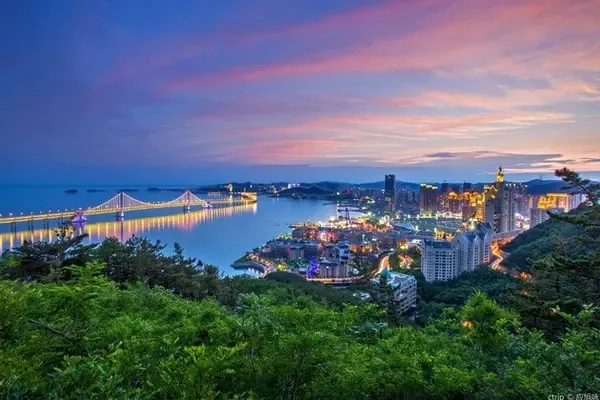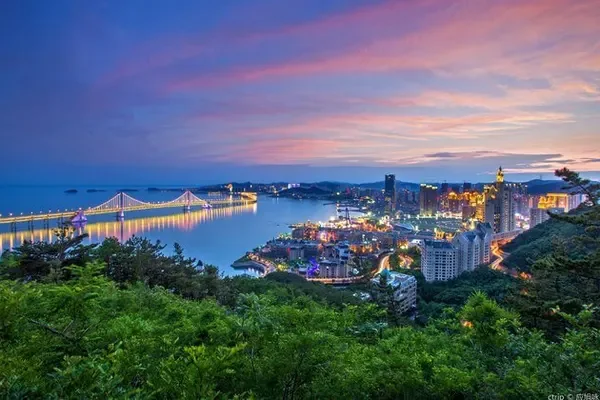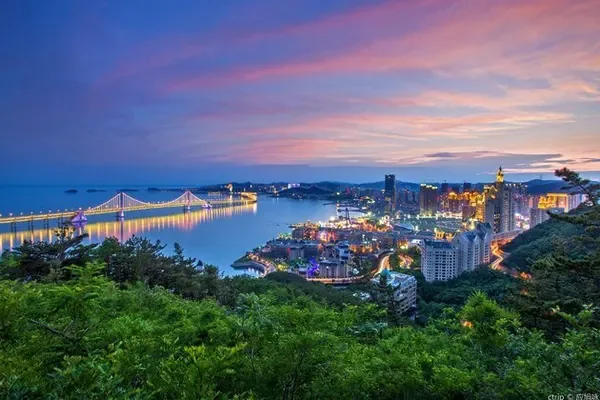Tibet
The vast wilderness, the rolling snow-capped mountains, it is the god who owns the mountains, rivers and seas.
It drowns the past, kills evil spirits, and seals love.
Cloudy, sunny, sun, moon, black, white. The gods are resident here and have the spiritual power to swim the waves across the mountains and forests. It is Tibet.
There are many adjectives about Tibet, and there are also many imaginations about Tibet. Tibet is remote, cold and untouchable.
And in the southeast of Tibet, there is a real paradise——
Lynch.
"Appreciate the peach blossoms in spring, enjoy the forest in summer, enjoy the red leaves in autumn, and enjoy the sunshine in winter"
Came from afar, met the tenderness of Tibet, the gods brought tenderness and color to Linzhi.
Lin Zhi is a woman who has come out of the rough and wild world. She does not wear makeup but reveals her natural tenderness. Sometimes it makes people feel close, but sometimes it feels like it can only be seen from a distance.
She made people see the "Jiangnan" in Tibet.
pink
Linzhi in spring is a gentle little girl with pink face, the moment her heart beats.
Some people say that the spring in Tibet is Nyingchi.
Because the Tibetan area in March is still sealed by ice and snow, the whiteness of the ridges and the withered grass of the grasslands are full of desolate and cold colors.
But Lin Zhi gradually became covered with unexpected colors.
The first peach blossom awakened from the slumber of ice and snow, and burst out. Like the first drop of paint dripping from the tip of a brush, it spreads quickly as soon as it is stained on the rice paper.
Peach red is dyed disorderly in some corners, here and there. Until it covered the hillside and stretched out to the river valley.
Linzhi's peach trees make people feel that they are in the south of the Yangtze River but not in the south of the Yangtze River.
The unpruned branches grow freely, without human interference, and are gentle and full of energy.
It has been hundreds of years old, and it is still vigorous after wind, frost, snow and rain.
Gala Peach Blossom Village
Along National Highway 318, there is an inconspicuous small village where the Peach Blossom Festival is held every year.
Ten Miles of Peach Blossoms, Gala Peach Blossom Village is the first stop for us to start the "Tour of Taoyuan".
Among the distant white snow, pink has begun to appear.
The Tibetan village is hidden among the peach blossoms, and the Peach Blossom Festival kicks off. Tibetan girls and enchanting peach blossoms, the faces of peach blossoms complement each other.
Forget your identity as a tourist, walk among the villages, maybe you can see a peach tree at the door of the Tibetan people you meet by accident.
Bomi Taohuagou
Wind, flowers, snow and moon, Bomi Taohuagou makes every petal romantic.
At the junction of the Tanggula Mountains and the Himalayas, Bomi is affected by the southwest monsoon of the Indian Ocean, forming a typical Jiangnan climate, which makes the peach blossoms here more abundant.
The peach blossoms stretch for dozens of miles, on the cliffs of canyons, in river valleys, and on snow peaks. The fragrance floats up from the ground, climbs up the ridges and clouds, and the sky becomes pink.
green
Lin Zhi in Xia Tian is a young man full of energy, a moment of vigorous growth.
Entering Linzhi is to push open the cloud gate. Tibetan countryside, sea of clouds, meadows, and rolling mountains. This piece of forest is worth measuring with footsteps.
Surrounded by snow-capped mountains, it is surrounded by lush forests, and the slightly light-colored meadows are also a little green.
Nyingchi is the third largest forest area in China, and 60% of Tibet's forests are concentrated here.
Linzhi must be the best place to escape the heat of the hot summer, with temperatures in the 20s and gentle breezes, encountering rainbows and having fun.
Lu Lang Lin Hai
In summer, you must go to Lulang Linhai to see the rushing green.
"Lu Lang's forest is like the sea, and I don't want to return it."
Lulang means "Dragon King Valley" in Tibetan, where the Dragon King lives. Spruce, pine and bushes stretch from the middle to the sides from low to high, like green oil pastels scraped off with a scraper, layer upon layer.
They are vast and endless. It rushes from the valley, and flows away along the endless horizon.
Find a suitable viewing platform, the clouds and mists are vaguely painted with a little white in the distance, some are thin, and they can be dispersed after blowing; some are thick and piled up, making people want to push them away.
Among the forests, patches of meadows, gurgling streams. There are also well-proportioned villages of farmers and herdsmen.
A few scattered horses lowered their heads, grazing leisurely, and the breeze blew their temples. The story here has to be imagined by yourself.
yellow
Lin Zhi in autumn is a calm youth, waiting for the moment of explosion.
The palette is mixed again, and the raindrops in the morning knock on the windows, driving away the summer, and overnight, autumn comes.
Autumn in Linzhi is the most colorful time of the four seasons. It starts to change from yellow to red early, and the color card can't fit it.
The light is projected from the back of the holy snow-capped mountain, and the yellow color gradually climbs up from the mountainside, and becomes redder when it reaches the top.
Niyang River
The autumn of the Niyang River is a bit dazzling. You think the photo has been overly beautified, but it may actually be the original film.
Along the coast, willow forests are covered with golden windbreakers, hugging each other in clusters, and the uniform spherical crowns are like blasted bread crumbs.
Although the autumn rhyme has arrived in late September, the Niyang River in early October is the heyday of color.
This turquoise river called "Tears of the Goddess" twists and turns, cutting apart the golden, light yellow, and light yellow trees and grass beaches.
The only sounds that can be heard are the flapping of the waterfowl's wings on the river, and the low mooing of cattle, sheep and horses on the grassy beach.
Namjagbarwa
On weekdays, Nanga Bawa is surrounded by clouds and mists all day long, and he never shows his true face. Until the arrival of autumn and winter.
The Himalayas block the warm and humid air from the Indian Ocean, but they cannot climb the tall Namjagbarwa.
As a result, the air flow went down and deposited at the foot of the mountain. The southern slope gave birth to a tropical rainforest, while the top of the mountain was still covered with snow.
The peak and the foot of the mountain, two extreme landscapes, from the equator to the poles.
Namjagbarwa Peak and Sejila Mountain can be seen from a distance, and the Grand Canyon can be seen up close.
On the roadside of National Highway 318, on the way from Lulang to Bayi Town, at the pass of Sejila Mountain, is the place where you can see Nanga Bawa Peak for the first time.
Nanga Bawa Peak stands proudly in the surrounding mountains, and only then did I feel the power of the ancient gods. He is in the sky, out of reach, and flowers in the moon mirror in the water, whispering dimly and silently.
The huge altitude difference makes the Yarlung Zangbo Grand Canyon the deepest canyon in the world. Camping in the canyon is a sacred place that can be reached with one's hand.
The first ray of light breaking through the darkness illuminates Namjagbarwa, slowly climbs from the mountain to the peak, and illuminates the entire canyon in golden yellow, turning yellow to red, and all living beings start to burn from this moment.
gray blue
Lin Zhi in winter is a kind old man, sleeping and waiting for the moment of rebirth.
Compared with the coldness we imagined in Tibet, Linzhi has more sunny days than cloudy days in winter, probably because he can't bear to bring the cruelty of winter here, and he has more tenderness.
The first snow on the treetops began to accumulate, and slowly, a thin layer of snow covered the ground and roofs. The light green of the woods at the foot of the mountain is mixed with white, blending into gray.
Winter is silent, and the whole world is only light and shadow, casting the shadows of fallen leaves and branches on the snow.
Winter is silent, and there are only mottled footprints in the whole world, with different shades. Guess where this is the story leading to.
But it is not cold in winter because of the warm sun.
Ba Songcuo
Going to Basongcuo means watching the whole winter of Nyingchi.
This place is in stark contrast to the rough winter in northern Tibet. Basongcuo is surrounded by mountains and has all the snowy scenery in its pocket.
Basongcuo has only gray and white and clear blue. The black-necked cranes returning from the south stayed in the snow for food, and the reflection of the snow-capped mountains was mixed in the holy water.
Snow-capped mountains, lakes, and ancient villages, the past follows the clouds, clear and mysterious.
The gentle "Jiangnan" and the "wildness" of Tibet have made Lin Zhi.
Before people go on a trip, they always ask what is the best season.
But if the destination is Nyingchi
This question can be answered in this way -
Anytime is fine.



